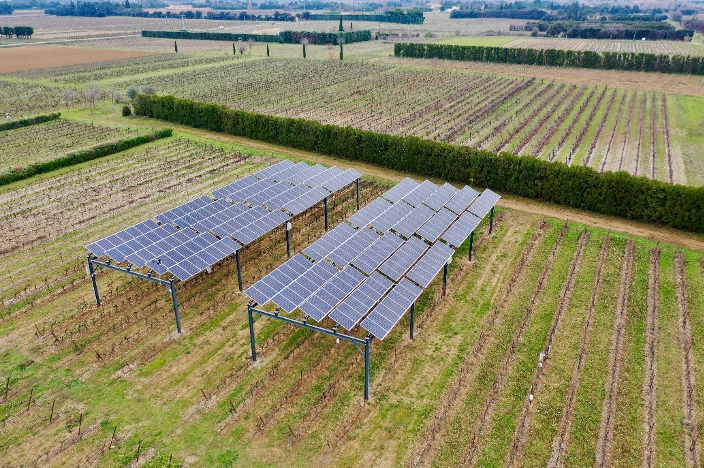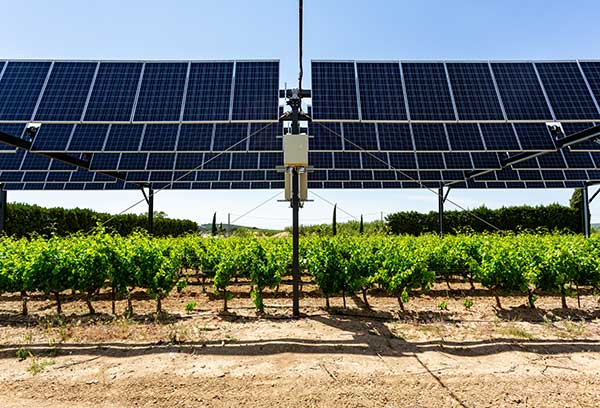Viticulture: Piolenc

Piolenc experimental system
The Piolenc experimental system is located on a vineyard with an area of 4.5 hectares belonging to the Vaucluse Chamber of Agriculture.
Recap of the effects of climate change on crops
Climate change intensifies extreme events such as heatwaves, heavy rain, hail, flooding and spring frost.
In viticulture in particular, climate change is affecting the yield and quality of grapes:
- Increasingly rapid increases in sugar levels are forcing winegrowers to harvest their grapes earlier, before they have reached phenolic maturity,
- Increases in water stress result in stunted growth and qualitative changes in the grapes,
- There is an increased risk of frost, as earlier bud bursts make the vineyards more susceptible to spring frost.
This system facilitates agronomic experiments
It involves two agrivoltaic structures with different panel orientation strategies, which are then compared with a control plot without panels.
The objectives of the Piolenc agrivoltaic system
- To develop and test a vine growth model that takes into account the impact of the microclimate under agrivoltaic systems,
- To test the panel control algorithms,
- To test how the net systems used in agriculture (anti-hail, anti-insect and others) can be adapted,
- To reduce water consumption,
- To increase and measure the biomass produced in terms of quality or quantity per hectare.
For the purposes of the experiment, the panel density is higher than the expected final configuration, in order to develop a robust model of vine growth under shading.

The agronomic monitoring includes the following:
- Phenology monitoring,
- Monitoring the water conditions and the ripening of the grapes,
- Monitoring the characteristics of the yield components,
- Statistical analyses of the results.
The Piolenc experimental system in figures
The photovoltaic system covers an area of
0 m²
Size of the control plot:
0 m²
Number of panels:
0
Nominal power:
0 kWp
Height of the agrivoltaic system:
0.2 m
Density:
0 plants/ha
Grape variety:
Grenache N
Distance between the rows:
0.25 m
Possible angle of rotation of the panels:
+/- 0°
Remotely controlled system
Agronomic results
- Les vignes abritées sous dispositif agrivoltaïque résistent mieux aux canicules,
- Leur besoin en eau est réduit de 12% à 34%, grâce à la diminution de l’évapotranspiration,
- Le profil aromatique est amélioré : +13% d’anthocyanes (pigments rouges) et entre 9% et 14% d’acidité en plus,
- La structure permet d’éviter un arrêt de croissance, réflexe des plantes en cas de canicule.
